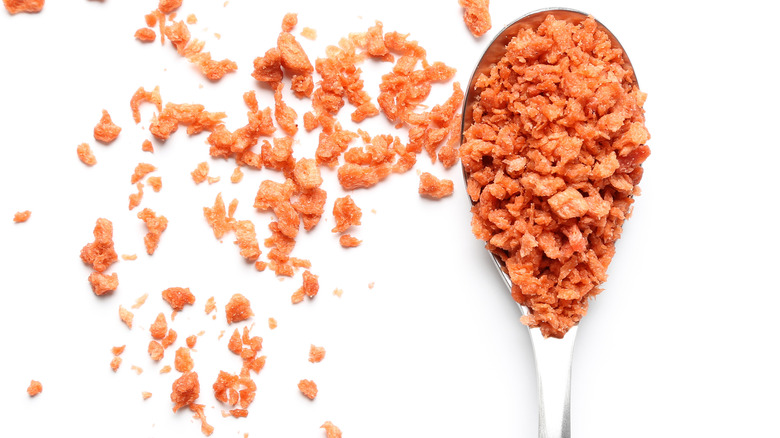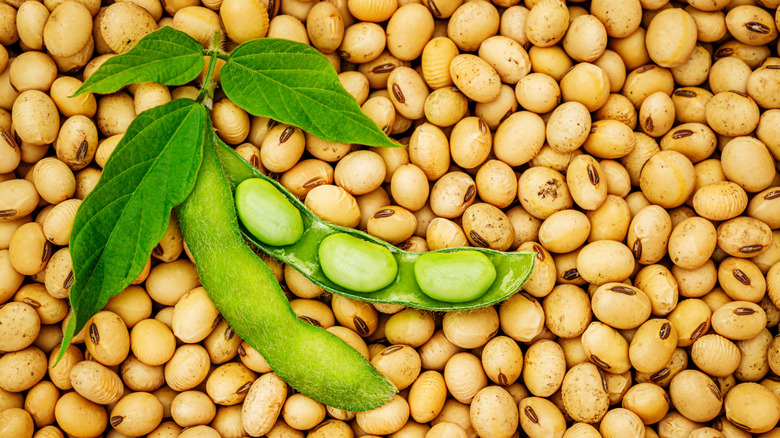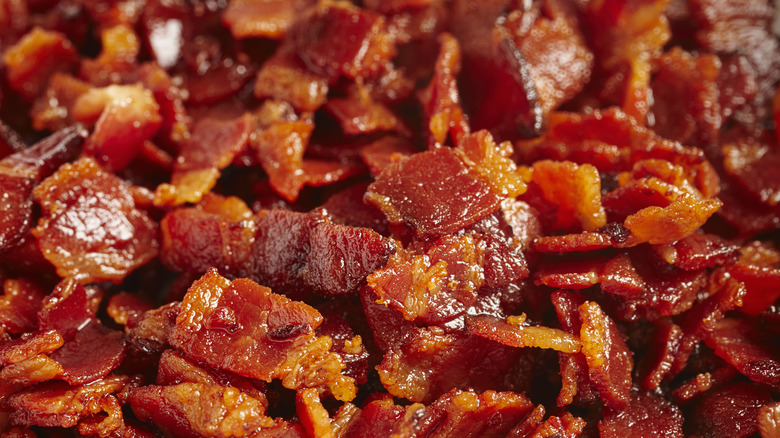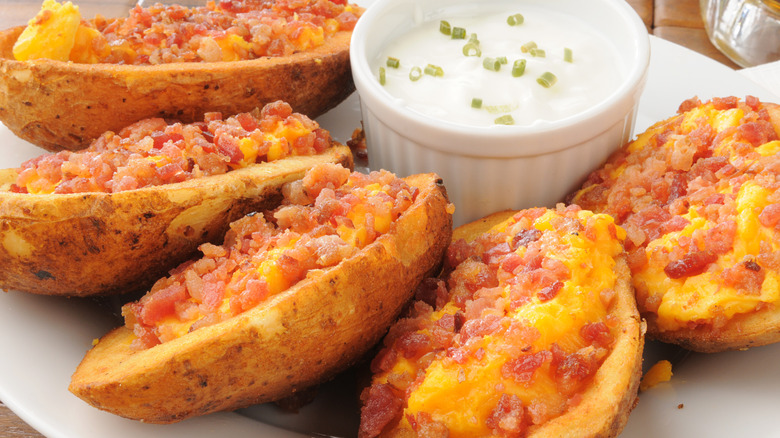Is There Actual Bacon In Bacon Bits?
Mmm, bacon. Few words in the English language can make your mouth water faster than those five little letters. Add the drool-enticing aroma of bacon sizzling in a frying pan, and you've likely got yourself a full-on case of hangry. Who knew that a few strips of bacon could wield so much power?
When Statista asked Americans, "Do you eat bacon?" a whopping 268.04 million responded in the affirmative in 2020. Clearly, the vast majority of U.S. citizens have a penchant for this pork-based breakfast meat. MarketWatch reveals that a survey conducted by Smithfield showed that 65% of Americans thought that bacon should become the official "national food." While this may come as a shock to traditionalists who contend that nothing is more American than the apple pie, this is not the only survey that highlights the country's love affair with bacon. Bacon Today points out that Maple Leaf Foods once conducted a survey that showed that 43% of respondents preferred bacon to sex and that "23% of men ranked bacon as their favorite fragrance."
This is a nation of pork lovers who would likely devour a piece of bacon at every opportunity presented. But what about bacon's diminutive cousin, the bacon bit? How does it measure up to the real thing? It all depends — not all bacon bits are created equal.
Some bacon bits are made from soy protein
Imagine a world where you can simply reach for a jar, shake your wrist, and slather any dish with a fine coating of bacon. Well, there is good news — this is the world in which you reside. There's just one caveat. Those little bits of bacon that you've sprinkled on your kale salad with bacon and almonds may not be "bacon" at all, unless your idea of bacon has never had legs or uttered a single "oink."
A significant amount of grocery store bacon bits are meatless, consisting of bacon bit shapes formed using soy protein. While this is good news for vegetarians and vegans, true bacon aficionados will likely be appalled. Even bacon-bit giant McCormick sells pork-free bacon bits. McCormick's website shows that these "Bac'n Pieces" contain "textured soy protein" with red dye, natural and artificial flavorings, and caramel color. MyRecipes notes that the FDA keeps a watchful eye on caramel color, as it is known to have risky amounts of "lead, arsenic, and mercury" and that Red 40 "can cause a host of complications." (Clean Green Simple does say that there are soy-free, vegan-friendly options on the market if you want to steer clear of controversial and synthetic ingredients.)
Still, the preservatives in regular bacon are controversial, too. MyRecipes warns that sodium erythorbate and sodium nitrite, two common ingredients in cured meats and bacon bits, have been linked to "headaches and fatigue in people who are sensitive to the preservatives."
Why don't they just use the real deal?
According to the University of California San Francisco, soy is a good source of protein and iron, and it's often used commercially as an alternative to meat.
While soy won't yield the exact same taste as bacon, it's certainly made to be bacon-flavored. And it might be better for you than the greasy breakfast meat we know and love. (Per Souper Sage, soy protein has more fiber, iron, and calcium than traditional bacon, and it's also lower in saturated fat.)
But aside from health reasons, why do companies use soy protein instead of sticking with real bacon bits? According to The Hidden Veggies, many companies use soy simply because it's a cheaper option and lasts longer than the real deal. But if you still can't get behind the vegan bacon bits sold in stores, the real thing is out there, too.
Meaty bacon bits do exist
If you're looking for bacon bits that actually contain bacon, both Hormel's Real Bacon Pieces and Oscar Mayer's Real Bacon Bits use bonafide pork.
Mental Floss points out that packages that say they contain real bacon contain exactly that: real bacon. Ones that use offbeat spellings for the word "bacon," meanwhile, (think back to McCormick's Bac'n Pieces) likely don't contain any pork.
Still, the best way to capture the taste of bacon in a miniature bite is to use the real deal. Good Life Eats recommends cutting bacon into bits, placing them in a cast-iron pan on medium-high heat for two minutes, and then transferring the pan to an oven set to 425 F. Cook for 25 to 30 minutes, checking every five minutes or so and stirring occasionally. When they're done, let them rest on a paper towel. Now those are truly bacon bits.



